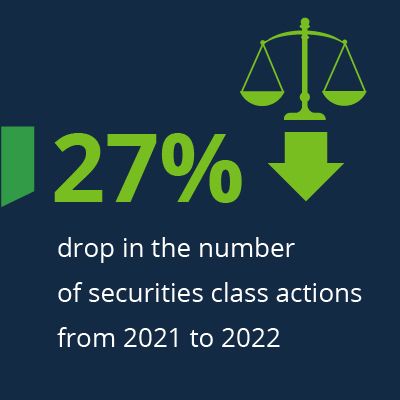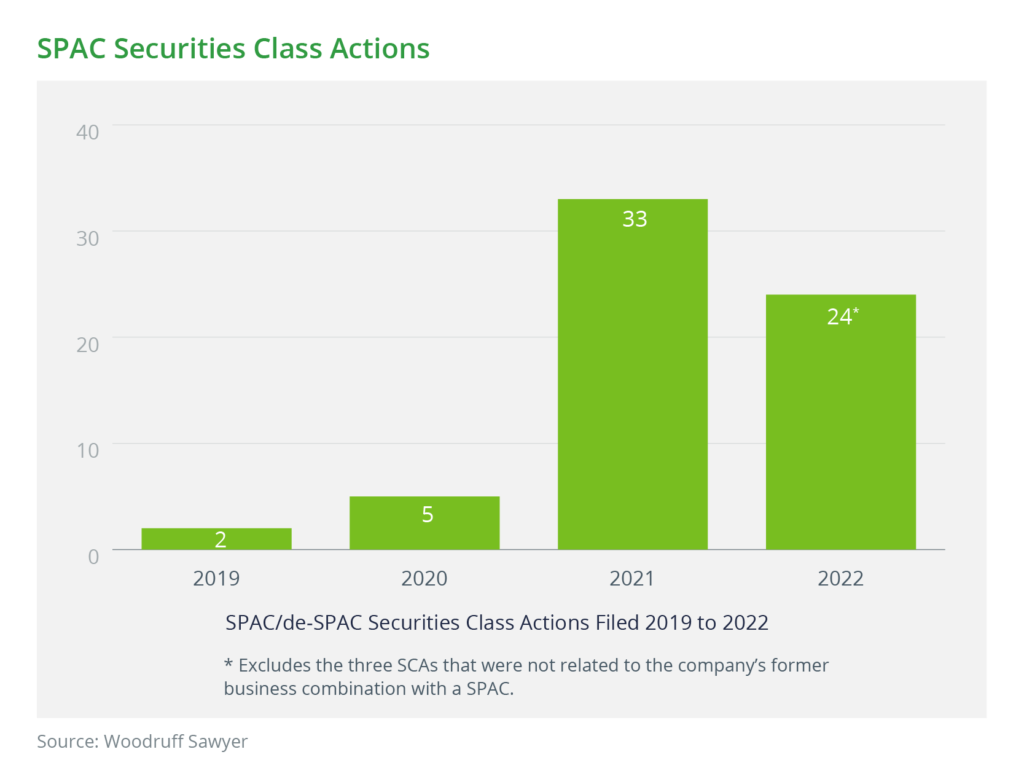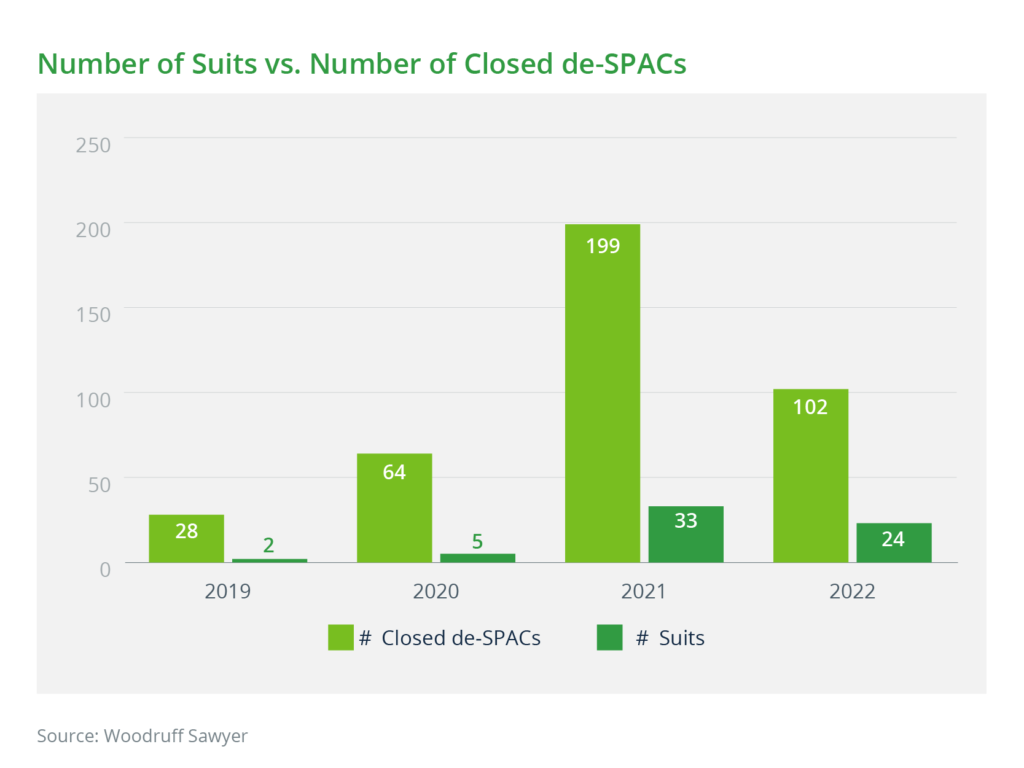
The Netflix series Madoff: The Monster of Wall Street is a compelling and largely accurate portrayal of Bernie Madoff’s Ponzi scheme. Unlike some other depictions of the fraud, it discusses how Madoff created the image of a statesman for himself to distract regulators. Unfortunately, it glosses over some things and is incorrect about some other parts of the story.
To its credit, the series does not focus exclusively on how Madoff enticed investors and institutions to entrust their money with him. It discusses his role in fulfilling his market-making responsibilities during the 1987 stock market crash. The series explains that when other market makers were not answering their phones, Madoff continued to buy stock at a loss. That earned him credibility on Wall Street and in Washington. Episode 1 (38:43).
Unfortunately, the series does not explain how Madoff’s legitimate broker-dealer and his advice to the Securities and Exchange Commission (SEC or Commission) helped the Commission meet a major challenge to modernize stock trading. The series makes a passing reference to Madoff’s role in helping computerize the over-the-counter market for stocks. Madoff’s firm helped drive the illiquid and opaque “pink sheet” market to become the liquid and transparent Nasdaq Stock Market. Episode 1 (25:18). But Madoff played a much bigger role in reshaping the structure of American securities markets.
In 1975, Congress enacted legislation granting the SEC new authority to facilitate the establishment of a national market system for securities.[1] Among the legislation’s goals was to link securities markets to foster efficiency, enhance competition, and contribute to best execution of customer orders.[2] Congress left the details up to the SEC. This mandate was fraught with political and technical challenges. Of course, Madoff furthered his own economic interests with the advice he gave to the SEC. Nonetheless, he provided meaningful input to help the agency achieve its goals.[3]
There are some other elements in the series with which I disagree. I discuss those below:
1. Madoff was not running a purported hedge fund.
Speakers in the series frequently refer to Madoff as a hedge fund. To the best of my knowledge, it was not a hedge fund.[4] Here’s why:
A hedge fund is a pooled investment vehicle, similar to a mutual fund. If you invest in a hedge fund, you own shares in the fund, not in the portfolio companies that the fund owns. In Episode 2 (46:48) an investor wants to see trading records to prove that he has shares in the stocks that Madoff said he was buying. If Madoff had been running a legitimate hedge fund, the investors would not have had an account with individual positions.
Furthermore, Depository Trust Company (DTC) (discussed below) does not hold positions for individual customers. A broker-dealer that is a participant in DTC will hold all of its positions together. The broker-dealer will have records showing how many shares each customer owns. For example, if XYZ broker-dealer holds 10,000 shares of ABC stock, DTC’s records will show only the 10,000 shares. XYZ broker-dealer’s records will show that Customer 1 owns 5,000 shares, Customer 2 owns 3,000 shares, and Customer 3 owns 2,000 shares. The episode implies that an investor would have been able to see his own positions at DTC. DTC records only would show an aggregate position.
Madoff was running a Ponzi scheme purporting to be an unregistered investment adviser. The irony is that had Madoff been running a real hedge fund, he would not have had to register with the SEC as an investment adviser under the Investment Advisers Act of 1940 (the Advisers Act).
At that time, the Advisers Act had a de minimis exemption from registration. It provided an exemption for “any investment adviser who during the course of the preceding twelve months has had fewer than fifteen clients and who neither holds himself out generally to the public as an investment adviser nor acts as an investment adviser to any investment company registered under [the Investment Company Act of 1940]….” A money manager’s client is the fund, not the investors in the fund. If a money manager only managed a single fund, it would have qualified for the de minimis exemption. Legitimate hedge fund managers relied on this exemption and did not have to register with the SEC.[5]
The SEC tried to circumvent the de minimis exemption by adopting a rule requiring the adviser to count the investors in the fund as clients, rather than the fund itself. That change would have required most hedge fund managers to register with the SEC. In Goldstein v. SEC, the Court of Appeals for the District of Columbia Circuit said that the SEC rule was “arbitrary” and vacated it. 451 F.3d 873 (2006).
Congress addressed this issue when it enacted the Dodd-Frank Wall Street Reform and Consumer Protection Act in 2010.[6] Section 403 of Dodd-Frank amended Section 203(b) of the Investment Advisers Act to require managers of hedge funds to register with the SEC as investment advisers.[7]
Some of the investors in Madoff’s fraud probably were hedge funds—pooled investment vehicles.[8] The fact that funds invested in Madoff did not make Madoff a hedge fund. More importantly, even if Madoff did not have to register as an investment adviser, it would not have shielded him from civil and criminal fraud charges.
2. DTC is not a regulator.
At the end of Episode 2 (46:05), Erin Arvedland refers to the Depository Trust Company as a “regulator.” It is not. It is a clearing agency registered under Section 17A of the Securities Exchange Act of 1934 (the Exchange Act).[9] A clearing agency is a self-regulatory organization (SRO), meaning that it has some quasi-governmental authority.[10] SROs are not government agencies and are not full-fledged regulators.
Unlike other SROs, the Exchange Act does not require a clearing agency to enforce its participants’ compliance with the Exchange Act. As a condition of registration as a clearing agency, Section 17A(b)(3)(A) of the Exchange Act requires a clearing agency “to enforce … compliance by its participants with the rules of the clearing agency….” By comparison, a registered securities association, such as FINRA, must have the capacity to enforce compliance by its members and persons associated with its members, with the provisions of this title, the rules and regulations thereunder, the rules of the Municipal Securities Rulemaking Board, and the rules of the association.[11] “With the provisions of this title” means that a registered securities association must enforce the Exchange Act with respect to its members. That language is conspicuous by its absence in the clearing agency provision. Accordingly, a clearing agency, such as DTC, is not a regulator and its self-regulatory authorities are less extensive than other types of SROs.
Further as noted above, DTC keeps records of its participants’ positions, not the individual positions of the participant’s customers. The SEC’s Office of Investigations Report (“OIR”) on Madoff explains that Madoff’s total positions at DTC were substantially less than the amount that a single customer thought it had. The OIR notes:
We reviewed a January 2005 statement for one Madoff feeder fund account, which alone indicated that it held approximately $2.5 billion of S&P 100 equities as of January 31, 2005. On the contrary, on January 31, 2005, DTC records show that Madoff held less than $18 million worth of S&P 100 equities in his DTC account.[12]
3. Congress did not cut the SEC’s budget.
Diana B. Henriques says in Episode 3 (19:43) that the SEC budgets had been “cut and cut again.” At the same time, the episode shows a clip of Ronald Reagan saying that “government is the problem.” There also are voiceovers of scenes from the aftermath of 9/11, stating that the SEC was not a priority. I do not agree with this portrayal of events.
The record as to when Madoff began his fraud is not clear, but it stretched for decades. The court records and press accounts are either vague or cite inconsistencies as to when Madoff or others said they began the Ponzi scheme.[13] The SEC’s Office of Investigations Report noted that investors first complained to the SEC about Avellino & Bienes, a feeder fund, in June 1992.[14] The SEC received complaints about Madoff during multiple chairmanships across several presidencies.[15] President Reagan’s last day in office was January 20, 1989. Following the tradition of former presidents, he largely stayed out the political fray and retired to his California ranch.[16] After a battle with dementia, President Reagan died on June 5, 2004. Showing a film clip of President Reagan sheds no light on the SEC’s failure to investigate Madoff. In my view, the film clip simply invokes a stereotype to inflame the audience.
President Reagan appointed John Shad, a former investment banker, as SEC chairman.[17] Chairman Shad famously said that he was going to “come down on insider trading with hobnail boots.”[18] During his tenure, the SEC brought landmark insider trading cases against Dennis Levine and Ivan Boesky.[19]
The Reagan Administration did not cut the SEC’s budget. According to the New York Times, during Shad’s tenure, by 1986 “the [SEC’s] budget ha[d] grown a modest 35%.”[20] An increase is not a cut.
Initially, Shad did not favor increasing the SEC’s budget significantly, a position consistent with the Reagan Administration’s views. After the Levine and Boesky cases, Shad said he would seek a major increase in SEC funding from Congress.[21] Republican members of the Committee on Energy & Commerce of the U.S. House of Representatives supported an increase. The SEC’s 1988 Budget Request urged Congress to increase the SEC’s budget by 27% over the 1987 appropriation. The request sought additional increases for two subsequent years.[22]
Congress increased the SEC’s budget every year between FY 1983 and 2021, with the exception of three years when the budget was essentially flat. In FY 2002, i.e., after the 9/11 terrorist attack damaged the SEC’s New York Regional Office, Congress added $20.7 million for disaster recovery. For the FYs 1983 to 1994, the median increase in funding was 12.9%, and the average increase was 10.78%. For the FYs 1995 to 2021, the median increase in Budget Authority was 6.09%, and the median increase in Actual Obligations was 7.34%.[23]
There is no question that after 9/11, the country focused new attention on terrorism and devoted substantial resources to that effort. But there is no evidence to show that Congress cut the SEC’s budget to help pay for those antiterrorism efforts.
I also disagree with Henriques’s statement “that the laws that they [presumably the SEC] could rely on to pursue investigations had been tightened.” Episode 3 (20:03). I do not know which laws she has in mind.
President Reagan did sign into law two tough insider trading bills:
- Insider Trading Sanctions Act of 1984 (P. L. 98-376, Aug. 10, 1984)—among other things, the legislation authorized the SEC to seek a civil penalty against insider traders for as much as three times the profit gained or loss avoided; and
- Insider Trading and Securities Fraud Enforcement Act of 1988 (P.L. 100-704, Nov. 19, 1988)[24]—among other things, the legislation:
- allowed the SEC to impose a similar penalty against a person who controlled the insider trader;
- authorized the SEC to award bounties to informants; and
- required broker-dealers and investment advisers to have policies and procedures reasonably designed to prevent insider trading.
There is plenty of blame to go around for the SEC’s failure to uncover Madoff sooner. Did Congress give the SEC all the money that it wanted? Of course not. Congress almost never gives any agency the full amount of funding that it seeks. The SEC has to compete for resources with all other agencies. Nonetheless, Congress materially increased the SEC’s funding regardless of which party controlled the White House or Congress.
4. SEC staff do not wear metal badges.
I have never seen an SEC staffer with a metal badge. Episode 3 (43:15). They had laminated identification cards that many wore with chains around their necks. In my day, SEC lawyers kept their IDs handy in their purses or wallets, but avoided wearing them on chains.
*****
Bernie Madoff’s crimes were hideous. He caused suffering to many people around the world. This series is a useful reminder of Madoff’s horrific acts; there is no need to bend the truth for dramatic effect.
© 2023 Stuart J. Kaswell, Esq., who has granted permission to the ABA to publish this article in accordance with the ABA’s Single Title Publication Agreement, which is incorporated by reference.
The Securities Acts Amendments of 1975 (1975 Acts Amendments), among other things, amended the Securities Exchange Act of 1934 by adding Section 11A(a)(2), Pub. L. 94-29, 89 Stat. 112 (June 4, 1975). ↑
Id. at Section 11A(a)(1)(D). ↑
Kaswell, Stuart J. The Bernie Madoff I Knew: How He Gained the Confidence of Regulators and Legislators, Business Law Today, American Bar Association, June 30, 2021. (Explains how Madoff cultivated regulators with respect to the National Market System.) ↑
It is wrong to say that a crooked scheme is a hedge fund, even if it claims to be one. It’s fraud. Calling a crooked scheme a hedge fund is like saying that a person who practices medicine without a medical license is engaging in medical malpractice. That person simply is committing a crime. ↑
For the reasons noted above, I do not agree with SEC Inspector General H. David Kotz’s description of the registration requirements for hedge fund managers at the time of the Madoff fraud. Episode 3 (16:14).
The series portrays Kotz sitting adjacent to an SEC logo, which might lead some viewers to assume that he was a member of the SEC staff at the time that that the producers filmed that segment. Kotz resigned his position as inspector general at the end of January 2012. SEC Inspector General David H. Kotz to leave Commission, SEC Press Release 2012-9. ↑
P.L. No. 111-203, July 21, 2010. ↑
Section 203 of the Investment Advisers Act of 1940 currently provides (
deletions; additions):(a) Necessity of registration
Except as provided in subsection (b) and section 203A of this title, it shall be unlawful for any investment adviser, unless registered under this section, to make use of the mails or any means or instrumentality of interstate commerce in connection with his or its business as an investment adviser.
(b) Investment advisers who need not be registered
The provisions of subsection (a) shall not apply to-
(1) any investment adviser, other than an investment adviser who acts as an investment adviser to any private fund, all of whose clients are residents of the State within which such investment adviser maintains his or its principal office and place of business, and who does not furnish advice or issue analyses or reports with respect to securities listed or admitted to unlisted trading privileges on any national securities exchange;
(2) [no change]
(3) which read as follows: “any investment adviser who during the course of the preceding twelve months has had fewer than fifteen clients and who neither holds himself out generally to the public as an investment adviser nor acts as an investment adviser to any investment company registered under subchapter I of this chapter, or a company which has elected to be a business development company pursuant to section 80a–53 of this title and has not withdrawn its election. For purposes of determining the number of clients of an investment adviser under this paragraph, no shareholder, partner, or beneficial owner of a business development company, as defined in this subchapter, shall be deemed to be a client of such investment adviser unless such person is a client of such investment adviser separate and apart from his status as a shareholder, partner, or beneficial owner;”.(3) any investment adviser that is a foreign private adviser;
At one point, Diana B. Henriques quotes Madoff, who says, “I’m not running a hedge fund. I do trades for hedge funds, as I have explained over and over.” Episode 3 (42:28). If the quote is accurate, it may be one of the few times Madoff was truthful when describing his business. ↑
The 1975 Acts Amendments also added Section 17A of the Exchange Act. ↑
Section 3(a)(26) of the Exchange Act defines a “self-regulatory organization” as, among other things, “any national securities exchange, registered securities association, or registered clearing agency….” ↑
Section 15A(b)(2) of the Exchange Act [emphasis added]. ↑
“Investigation of Failure of the SEC to Uncover Bernard Madoff’s Ponzi Scheme,” Public Version, Office of Investigations, U.S Securities and Exchange Commission., August 31, 2009, Report No. OIG-509, at 20. ↑
Court records and press accounts note that it is unclear when Madoff began the fraud. The OIR does not specify a time and only indicates when the SEC received complaints, as discussed below.
The Department of Justice alleged that it began “at least as early as the 1980s.” Transcript of Guilty Plea, U.S. v. Bernard L. Madoff, 09 CR 213(DC), S.D.N.Y March 12, 2009, at 32. The government alleged that “at the end [of the scheme], Madoff told his clients that he was holding nearly $65 billion in securities on behalf of those clients. In fact, he had only a small fraction of that amount.” Id. at 33-34.
According to a CNBC report:
It isn’t clear exactly when Madoff started crossing the ethical line, particularly because honesty was not his currency. He pegged the start of his scheme to 1987, but he later claimed that it was 1992. Madoff’s account manager, Frank DiPascali Jr., who began working for him in 1975, testified that the illegalities had been going on “as long as I remember.”
Bernie Madoff, mastermind of largest Ponzi scheme in history, dies at 82, CNBC, April 14, 2021. ↑
OIR, at 42 et seq. ↑
The following chart indicates when investors or others complained to the SEC and identifies the president and SEC chair at that time.
Complaints to the SEC
President
SEC Chairman
June 1992
George H.W. Bush
Richard C. Breeden
May 2000
William J. Clinton
Arthur Levitt
March 2001
George W. Bush
Laura Unger (Acting)
May 2003
George W. Bush
William H. Donaldson
April 2004
George W. Bush
William H. Donaldson
October 2005
George W. Bush
William H. Donaldson
December 2008
George W. Bush
Christopher Cox
Sources: OIR Report at 20-22; SEC Summary. ↑
President Reagan’s gave a farewell address to the nation on January 11, 1989, nine days before the end of his term. The last sentence of his remarks state “and so goodbye, God bless you, and God bless the United States of America”. Saying “goodbye” was unusual and a clear signal that Reagan was finished with public life. President Reagan’s last public speech was on February 3, 1994, on the occasion of his eighty-third birthday. On November 5, 1994, President Reagan released a handwritten letter announcing his Alzheimer’s diagnosis. ↑
Sloane, John S. R. Shad Dies at 71, S.E.C. Chairman in the 80s, New York Times, July 9, 1994. ↑
Id. The SEC noted:
On November 14, 1986, the Commission instituted the largest insider trading case in its history against arbitrageur Ivan F. Boesky. The Commission alleged that Boesky caused certain affiliated entities to trade in securities while in possession of material nonpublic information concerning tender offers, mergers, and other extraordinary corporate transactions. Boesky was alleged to have obtained this information from investment banker Dennis B. Levine, who previously had been enjoined in a Commission action brought in May 1986.
U.S. Securities and Exchange Commission, Annual Report, 53d, 1987, at 10 (citations omitted). ↑
Sterngold, Shad Seeks SEC Expansion, New York Times, Dec. 6, 1986. John Shad stepped down as chairman on June 18, 1987. SEC Historical Summary of Chairmen and Commissioners (“SEC Summary”). ↑
Id., stating:
John S. R. Shad, the chairman of the Securities and Exchange Commission, said here today that he would be seeking a “substantial increase” in the commission’s budget and staff for the coming fiscal year, the first such major expansion in five years.
Mr. Shad refused to detail how much funding he was seeking for the year that begins next Oct. 1, but he said that most of the growth would be in the agency’s enforcement division.
The comments were made to Wall Street executives assembled for the annual convention here of the Securities Industry Association. ↑
The SEC’s authorization request was:
Fiscal Year
SEC Authorization Request
1988
$153.9 million
1989
$169.0 million
1990
$181.1 million
The request included a proposed 30% increase in budget for enforcement operations. Statement of John Shad, Chairman of the Securities and Exchange Commission, Before the Senate Subcommittee on Securities, Concerning the Commission’s Authorization Request for Fiscal Years 1988-1990, May 13, 1987, at 3. It is important to note that the authorization request is just the first step in a long appropriations process. ↑
According to the SEC:
SEC Total Funding Level
Line
Fiscal Year
Money $(000)
% Change
1
1983
$ 88,690
2
1984
$ 94,000
5.99%
3
1985
$ 106,382
13.17%
4
1986
$ 106,323
-0.06%
5
1987
$ 114,500
7.69%
6
1988
$ 135,221
18.10%
7
1989
$ 142,640
5.49%
8
1990
$ 166,633
16.82%
9
1991
$ 189,083
13.47%
10
1992
$ 225,792
19.41%
11
1993
$ 253,325
12.19%
12
1994
$ 269,150
6.25%
Median
12.19%
Average
10.78%
Sources:
Lines 1-7
SEC Annual Report 1989, Table 25, Page 162
Lines 8-12
SEC Annual Report 1995, Table 25, Page 157
*****
SEC Budget FY 1995 – 2021
($ in 000s)
Fiscal Year
Budget Authority
% Change
Actual Obligations
% Change
1995
$ 300,437
$ 284,755
1996
$ 300,921
0.16%
$ 296,533
4.14%
1997
$ 311,100
3.38%
$ 308,591
4.07%
1998
$ 315,000
1.25%
$ 311,143
0.83%
1999
$ 341,574
8.44%
$ 338,887
8.92%
2000
$ 377,000
10.37%
$ 369,825
9.13%
2001
$ 422,800
12.15%
$ 412,618
11.57%
2002
$ 513,989A
21.57%
$ 487,345
18.11%
2003
$ 716,350
39.37%
$ 619,321
27.08%
2004
$ 811,500
13.28%
$ 755,012
21.91%
2005B
$ 913,000
12.51%
$ 887,227
17.51%
2006
$ 888,117
-2.73%
$ 877,278
-1.12%
2007
$ 881,560
-0.74%
$ 875,456
-0.21%
2008
$ 906,000
2.77%
$ 905,313
3.41%
2009C
$ 953,000
5.19%
$ 960,189
6.06%
2010
$ 1,111,000
16.58%
$ 1,101,547
14.72%
2011
$ 1,185,000
6.66%
$ 1,212,859
10.11%
2012
$ 1,321,000
11.48%
$ 1,289,675
6.33%
2013D
$ 1,321,000
0.00%
$ 1,276,158
-1.05%
2014
$ 1,350,000
2.20%
$ 1,415,814
10.94%
2015
$ 1,500,000
11.11%
$ 1,550,548
9.52%
2016
$ 1,605,000
7.00%
$ 1,681,882
8.47%
2017
$ 1,605,000
0.00%
$ 1,651,317
-1.82%
2018
$ 1,652,000
2.93%
$ 1,687,390
2.18%
2019
$ 1,674,902
1.39%
$ 1,695,905
0.50%
2020
$ 1,825,525
8.99%
$ 1,826,552
7.70%
2021
$ 1,926,162
5.51%
$ 1,954,006
6.98%
Median
6.09%
7.34%
Average
7.72%
7.92%
[SEC] Notes:
Budget Authority figures above do not include carryover or recoveries
A. Includes $20,705 for Disaster Recovery, $24,820 carryover for Pay Parity, $30,900 for 2nd Supplemental, & $336 rescission.
B. Enacted at $913,000, but SEC was required to leave $25,000 unobligated to apply towards FY 2006.
C. FY09 authority includes $10,000 Supplemental and does NOT include $17,000 reprogramming.
D. FY13 authority does not include $66,050 sequestration reduction.
Author’s Note: Information from the SEC appears in columns with a white background. I have calculated the year-to year percentage changes, median change, and average change using Excel. I highlighted those columns in grey. I did not combine these charts because the first set of data did not contrast Budget Authority with Actual Obligations and only identified the figures as “Money.” ↑
Kaswell, An Insider’s View of the Insider Trading and Securities Law Enforcement Act of 1988, Securities Law, Administration, Litigation, and Enforcement, Section of Business Law, American Bar Association, Vol. III (1991) at 252. ↑



















